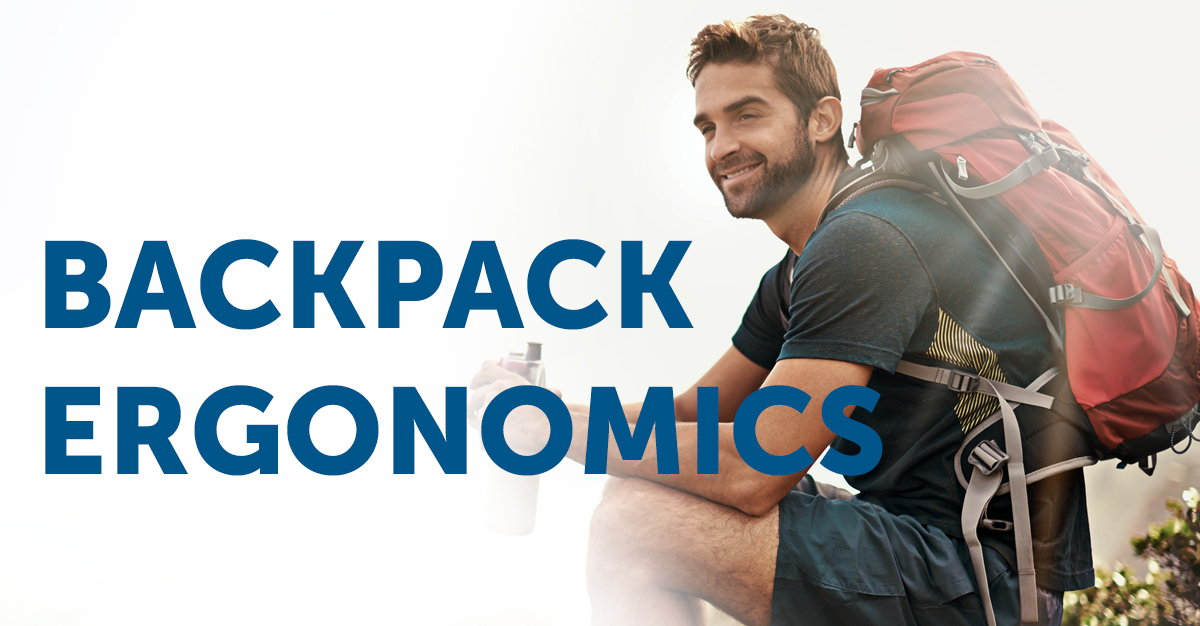
Children and adults alike use backpacks to carry their books, laptops, gear, and supplies throughout the day. Unfortunately, when used improperly, long-term side effects of using heavy bags continuously can result in poor posture and pain. Here are some tips to help practice proper backpack ergonomics to keep your body pain-free and feeling good.
Personalize Your Backpack Fit
Each of our bodies are unique! This means the fit of your backpack should be too. Listed below are some tips and tricks towards having better backpack ergonomics.
Size:
- The size of your backpack should not extend beyond your shoulders.
- Your backpack should sit evenly and comfortably on your back; it shouldn’t sag to your buttocks.
Fit:
- Padded straps help relieve pressure on your shoulders for much-needed comfort.
- Shoulder Straps should rest comfortably; make sure you adjust the straps for the right fit for your body.
- Adjust the straps so that the bottom of the pack rests in the curve of your lower back.
- If the backpack has a waist or chest strap, use it. Waist straps help to distribute the weight load to the hips, relieving shoulder pressure. A chest strap helps keep the shoulder straps in place and reduces the swaying of the pack.
Weight:
Your backpack should never exceed 15% of your overall body weight. Following this will curb the early onset of back, neck, and shoulder pain and poor posture. For example, a child who weighs 100 pounds shouldn’t carry a loaded backpack heavier than 15 pounds.
In a study investigating school children’s perception of backpack loads: 79% of surveyed individuals said their backpacks were heavy, 66% felt their backpacks caused fatigue, and 46% said they had back pain due to a heavy load. So, if you or a loved one leans forward to carry a backpack…it’s too heavy!
Your backpack is too heavy if:
- It’s difficult to put on or take off.
- You have pain from wearing it.
- You feel tingling or numbness in your limbs.
- Strap marks show on your shoulders.
- Your posture changes while wearing it.
Tips to reduce weight and help posture:
- Every few weeks, go through your pack and remove any unnecessary items. All the little things that pile on weight impact the overall weight of your backpack.
- Load the heaviest items closest to your back.
- Arrange books and other supplies so they won’t slide around in the backpack.
- Consider using a book bag on wheels.
Lifting Your Backpack:
Properly picking up a backpack may not seem important, but because we use them so often, it can take a toll on your body. By using safe lifting techniques, you can avoid injuries and pain. Proper lifting safety includes:
- Lift with your legs
- Don’t bend your body to the side
- Keep your back straight
- Use both hands (If lifting with only one, keep your wrist straight)
Tip: Do NOT one-strap when picking it up or carrying your backpack. Distribute the weight evenly across your body by using both straps.
Pain caused by poor backpack ergonomics will most likely start as short-lasting muscle pain. However, if you continue to lift or carry your backpack incorrectly it could lead to chronic pain issues that linger or worsen over time. We can work with you to eliminate your back, neck, and shoulder pain, improve posture, and work with you to make sure your backpack doesn’t cause any additional stress on the body. If you are experiencing pain that isn’t going away on its own, please schedule an appointment and start feeling better today.

